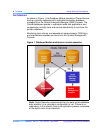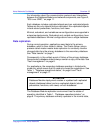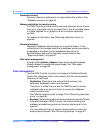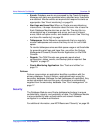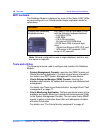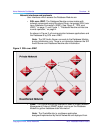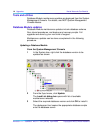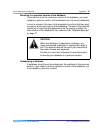
8 Overview
NN10031-111 Standard MCP 1.1 FP1 (02.02) April 2003 Copyright © 2003, Nortel Networks
Nortel Networks Confidential
Database recovery
Recovery restores a database to its original state after a failure. See
“Database recovery” on page 84.
Manage replication transaction errors
The OEM Console provides tools for resolving replication errors, should
they occur. Replication errors can result from a lack of available space
in a table targeted for an update or other unresolved replication
conflicts.
For additional information, see “Resolving replication errors” on
page 89.
Resynchronization
Replicated databases should always be in synchronization. In the
unlikely event that changes made to one database are not successfully
propagated to the other, the two databases become out of
synchronization and must be manually resynchronized. See
“Resynchronization” on page 92.
Disk space management
A script called optimize_dbspace drops and recreates Database
Module indexes to reduce disk space usage. See “Disk space
management” on page 93.
Fault management
Use the OEM Console to monitor and respond to Database Module
faults in the categories listed in this section. Note the recommended
frequency for each task.
• Replication: Replication jobs ensure that the primary and
secondary databases remain synchronized.
Therefore it is critical that you use the OEM Console to monitor
replication jobs once every 24 hours to ensure the databases
remain synchronized.
See “Monitor replication jobs” on page 27 and “Resolving replication
errors” on page 89.
• Backups: Once backup jobs have been scheduled using the Oracle
Enterprise Manager (OEM) Console, the system backs up the
database at predefined periods and sends a status email to the
operator.
It is recommended that you monitor backup status to ensure the
backup was successful. See “Monitoring backups” on page 20.






